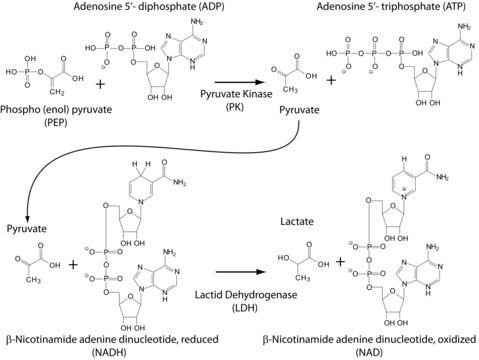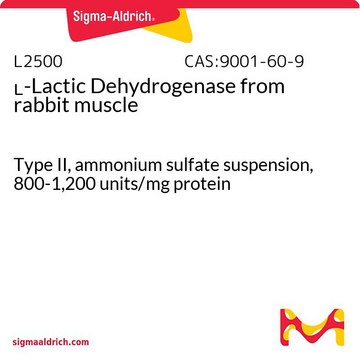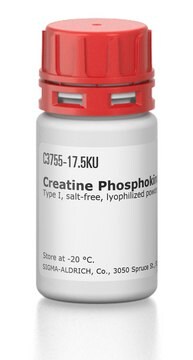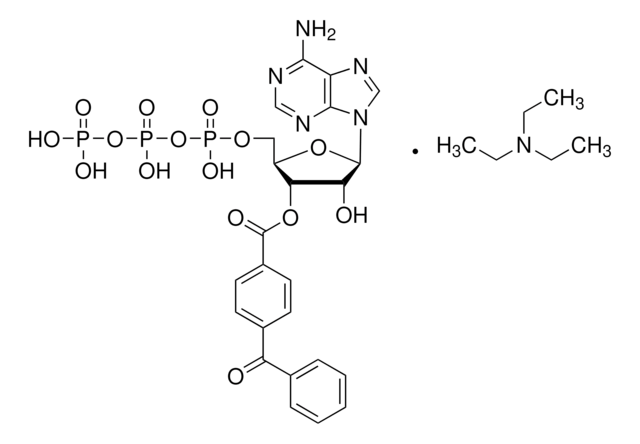M1434
2-Methylthioadenosine 5′-monophosphate triethylammonium salt hydrate
solid, ≥98% (HPLC)
Sinónimos:
2-MeSAMP, 2-Methylthio-AMP triethylammonium salt hydrate
About This Item
Productos recomendados
Ensayo
≥98% (HPLC)
Formulario
solid
condiciones de almacenamiento
desiccated
color
white
solubilidad
H2O: 20 mg/mL, clear, colorless
temp. de almacenamiento
−20°C
cadena SMILES
O.CCN(CC)CC.CSc1nc(N)c2ncn([C@@H]3O[C@H](COP(O)(O)=O)[C@@H](O)[C@H]3O)c2n1
InChI
1S/C11H16N5O7PS.C6H15N.H2O/c1-25-11-14-8(12)5-9(15-11)16(3-13-5)10-7(18)6(17)4(23-10)2-22-24(19,20)21;1-4-7(5-2)6-3;/h3-4,6-7,10,17-18H,2H2,1H3,(H2,12,14,15)(H2,19,20,21);4-6H2,1-3H3;1H2/t4-,6-,7-,10-;;/m1../s1
Clave InChI
YQMUWWZKFZERBT-IDIVVRGQSA-N
Categorías relacionadas
Aplicación
- as a P2Y12 inhibitor to study its effects on stimulation of endocytosis in high-density lipoprotein (HDL).
- as a P2Y12 inhibitor to study its effects on platelet recruitment in whole human blood.
Acciones bioquímicas o fisiológicas
Código de clase de almacenamiento
11 - Combustible Solids
Clase de riesgo para el agua (WGK)
WGK 3
Punto de inflamabilidad (°F)
Not applicable
Punto de inflamabilidad (°C)
Not applicable
Equipo de protección personal
Eyeshields, Gloves, type N95 (US)
Elija entre una de las versiones más recientes:
¿Ya tiene este producto?
Encuentre la documentación para los productos que ha comprado recientemente en la Biblioteca de documentos.
Los clientes también vieron
Nuestro equipo de científicos tiene experiencia en todas las áreas de investigación: Ciencias de la vida, Ciencia de los materiales, Síntesis química, Cromatografía, Analítica y muchas otras.
Póngase en contacto con el Servicio técnico









